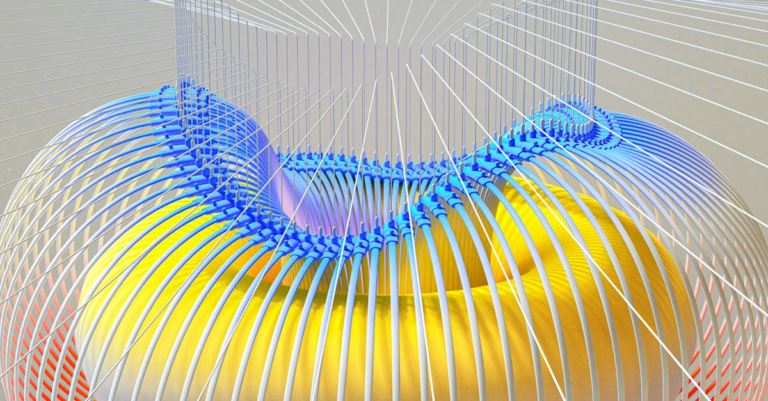The Worst Mistakes You Can Make With Digital Twins
Digital twins are massively overhyped. I’ve watched countless companies waste millions on these virtual replicas only to abandon them months later. The promise sounds incredible – a perfect digital copy that mirrors your physical assets – but the reality often falls painfully short. Most organizations jump into digital twin projects without understanding the massive data requirements, technical complexity, and ongoing maintenance costs.
My experience implementing digital twin technology across manufacturing environments has taught me some hard lessons. You need robust sensor networks, reliable data pipelines, and technical expertise that many teams simply don’t have. The biggest mistake? Treating these virtual models as magic solutions rather than what they truly are: sophisticated tools that require careful integration with your existing systems. Without proper planning, your digital twin becomes nothing more than an expensive 3D model that quickly grows outdated and useless.
Read on as I share the critical mistakes you must avoid if you want your digital twin implementation to deliver actual business value instead of becoming another failed technology experiment.

Photo provided by Alena Darmel on Pexels
In the article
- Common Digital Twins Implementation Failures
- Technical and Strategic Errors in Digital Twins Development
Common Digital Twins Implementation Failures
I’ve seen many organizations struggle when implementing digital twins. One of the biggest issues is poor data integration. When I work with companies, I often find their virtual models are incomplete because they haven’t properly connected all their data sources. This creates a fragmented view that doesn’t accurately represent the physical asset.
Another mistake I frequently encounter is rushed deployment. Companies get excited about manufacturing process optimization benefits and want to implement everything at once. I always advise starting small with a pilot project instead. This allows for testing and refinement before full-scale implementation.
Inadequate sensor networks are a critical problem too. Without enough sensors collecting real-time monitoring capabilities data, digital twins can’t provide accurate insights. I recommend conducting a thorough assessment of existing sensor infrastructure before starting any digital twin project.
Overlooking Digital Twins Integration with Industrial IoT
Many organizations miss establishing crucial connections between physical assets and their virtual counterparts. I’ve consulted with several manufacturers who invested heavily in digital twins but failed to create reliable pathways between their actual equipment and the virtual models.
When setting up industrial IoT data streams, I’ve noticed companies often underestimate the importance of data reliability. Sensors must provide consistent, accurate information to keep the digital twin updated. Without this foundation, even the most sophisticated digital twin becomes useless.
I also see many companies ignore communication protocol standards. When I review failed implementations, I typically find a patchwork of incompatible systems trying to work together. This creates data bottlenecks and unreliable updates to the digital twin.
Underestimating Data Requirements for Factory Automation
I’ve analyzed numerous factory automation projects where companies didn’t install enough data collection points. When I walk through manufacturing facilities, I often identify critical processes with no monitoring capabilities. This creates blind spots in the digital twin.
Poor sensor data quality is another common issue I encounter. Many times, I find virtual manufacturing models undermined by inaccurate or inconsistent readings. Even small measurement errors can lead to significant discrepancies between the physical and digital worlds.
I always emphasize the importance of continuous sensor calibration. When I audit failed implementations, I typically discover measurement systems that haven’t been maintained properly. Regular calibration ensures the data feeding your digital twin remains accurate over time.

Photo provided by Alena Darmel on Pexels
Technical and Strategic Errors in Digital Twins Development
Misalignment Between Digital Twins and Business Objectives
One of the most serious mistakes I see is creating digital twins without clear objectives. When I ask stakeholders what problems they’re trying to solve, I often get vague answers. Every digital twin should have specific production optimization goals aligned with business priorities.
I’ve witnessed many projects fail because they didn’t involve operations teams early enough. When I facilitate successful implementations, I always ensure key stakeholders from operations participate from the beginning. Their practical knowledge is essential for creating useful digital twins.
Many companies I work with miss opportunities for improving manufacturing efficiency. When reviewing digital twin implementations, I frequently identify valuable data insights that weren’t being utilized. The best digital twins don’t just collect data – they transform it into actionable intelligence.
Flawed Approaches to Predictive Modeling
I often find companies using overly simplistic algorithms that miss complex patterns. When analyzing predictive models, I look for approaches that can handle the intricacies of industrial environments. Basic models might work initially but fail to capture subtle interactions between variables.
Another mistake I regularly observe is ignoring physical constraints in simulations. When I evaluate industrial simulation scenarios, I check whether they account for real-world limitations like material properties, equipment capacities, and environmental conditions.
Validation against actual performance data is critical yet often neglected. I always recommend continuous comparison between predicted outcomes and real results. This helps refine the model and build confidence in its predictions.
Neglecting AI Manufacturing Applications
I’ve seen many organizations miss opportunities to apply machine learning in their digital twins. When I review implementations, I often find traditional rule-based systems where AI simulation technology would provide superior results. Machine learning can identify patterns humans might miss.
Insufficient historical data for training models is a common problem I encounter. When helping companies implement AI components, I emphasize the importance of collecting and preserving quality historical data. Without enough training examples, AI systems can’t learn effectively.
Many digital twins I evaluate lack proper anomaly detection capabilities. When I help design these systems, I make sure they can identify unusual patterns that might indicate problems. Early warnings allow for proactive maintenance before failures occur, which is one of the most valuable benefits of digital twins.
Start Your Virtual Transformation Today
I’ve seen many companies rush into virtual replication projects without proper planning, only to face disappointing results. From my experience working with manufacturing clients, the most successful implementations start with clear objectives and realistic expectations. You don’t need to transform your entire operation overnight – I recommend beginning with a single critical asset or process where you can measure concrete improvements in efficiency or downtime reduction.
Your first step should be examining your current data collection capabilities. The quality of your virtual model depends entirely on the quality of your input data. I suggest mapping your existing sensors and identifying any gaps before choosing your simulation platform. Once you’ve established your data foundation, select a specific business challenge – like production bottlenecks or maintenance scheduling – where virtual modeling can provide immediate value.
Ready to avoid the mistakes others have made? Connect with me to discuss your specific challenges, or download my implementation checklist to assess your readiness. The virtual representation technologies we’ve discussed aren’t just fancy tech – they’re practical tools that can transform your operations when applied thoughtfully. My goal is to help you build systems that deliver real results without the common pitfalls.







